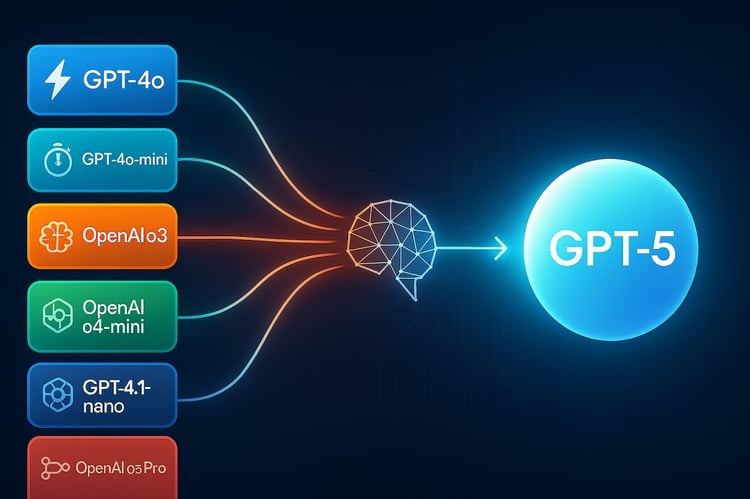Track
OpenAI released GPT-5.1 this week, emphasizing user experience over raw capability gains and without the usual benchmark tables or performance charts. This shift reflects some broader industry dynamics: Users have grown skeptical of overhyped launches, and OpenAI is choosing to lead with usability improvements rather than competitive benchmarks.
Here’s what I feel are the big takeaways from the announcement:
- GPT-5.1 splits into two coordinated models, one tuned for speed (GPT-5.1 Instant), the other for reasoning (GPT-5.1 Thinking).
- It introduces automatic routing that dynamically chooses between them based on your request.
- The new models offer expanded personalization controls, giving users more granular ways to shape how ChatGPT sounds and behaves.
These features build on the UX-first approach OpenAI established with GPT-5's model unification, so we've now seen two releases in a row with a heavy UX focus.
What's somewhat unusual about this release is how much of it reads as fixing problems from GPT-5: better instruction following, clearer responses with less jargon, tone controls that actually stick. It's a reminder that even flagship releases can ship with rough edges.
In this article, I’ll walk you through all of the main talking points and get hands-on with some GPT-5.1 examples to test the new features.
We keep our readers updated on the latest in AI by sending out The Median, our free Friday newsletter that breaks down the week's key stories. Subscribe and stay sharp in just a few minutes a week:
What's New in GPT-5.1?
With this release, OpenAI is reorganizing how GPT-5 works. It is splitting GPT-5.1 into two models: GPT-5.1 Instant, a faster and friendlier model for everyday use, and GPT-5.1 Thinking, a deeper reasoning model for complex problems.
If you remember, GPT-5 already offered multiple models - a standard version, GPT-5 Thinking for reasoning tasks, and GPT-5 Pro for the most demanding work - but users had to manually choose between them.
One thing that’s changed with GPT-5.1 is that it now automatically decides which model to use based on the nature of your request, routing simpler tasks to Instant and more demanding ones to Thinking.
What Is GPT-5.1 Instant?
GPT-5.1 Instant is the fast-response version of the GPT-5.1 family, designed for conversational and everyday use cases. It handles tasks that require quick, fluent interaction, such as drafting messages, summarizing text, or answering straightforward questions.
GPT-5.1 Instant prioritizes low latency and consistent response quality, producing answers with minimal delay while maintaining clear, contextually relevant language.
What Is GPT-5.1 Thinking?
GPT-5.1 Thinking is the reasoning-focused counterpart. It’s built for tasks that benefit from deeper analysis or multi-step logic. It dynamically adjusts its response time depending on the complexity of a request, taking longer when careful reasoning or structured problem-solving is required.
This variant is intended for more technical or analytical work, like coding, data interpretation, or structured planning. Essentially, I feel this is best suited for where the model’s ability to evaluate, connect, and synthesize information matters more than speed.
Automatic routing between models
I think an innovation that will be most useful to users of GPT-5.1 isn't just that there are two models, it's that you don't have to choose between them. GPT-5.1 includes an automatic routing system that analyzes each request and directs it to whichever model is better suited for the task.
Simple queries like "summarize this email" or "what's the weather like?" go to Instant for fast responses. More complex requests like "debug this code" or "analyze this dataset for trends" get routed to Thinking for deeper analysis.
The system makes this decision transparently in the background, balancing speed, quality, and computational cost without requiring manual model selection. Of course, you can still select the model you want to use with the model picker.
Other Improvements in GPT-5.1
Besides the two complementary models and automatic routing, there are some other notable improvements, most of which apply across both variants. Instant and Thinking share the same core architecture, so improvements to instruction following and response quality benefit both.
The distinction is how adaptive reasoning is applied. Instant uses it to stay fast and conversational, while Thinking leans on it for deeper, slower analysis.
Adaptive reasoning
While routing decides which model to use (Instant versus Thinking), adaptive reasoning controls how much computational effort each model dedicates to a given request. Instead of using a fixed response time, both GPT-5.1 Instant and GPT-5.1 Thinking now adjust their reasoning depth based on task complexity.
They spend less time on quick questions and more on multi-step or analytical ones.
This makes Instant feel faster without losing accuracy on straightforward tasks, while Thinking becomes more deliberate and persistent when tackling difficult prompts.
OpenAI's internal benchmarks highlight this thinking time variance. Compared to GPT-5, GPT-5.1 Thinking is roughly twice as fast on the easiest tasks and about twice as slow on the hardest ones.
This means GPT-5.1 is dynamically allocating its reasoning time and focusing effort where it matters most—a two-layer optimization system where routing picks the right model, then adaptive reasoning calibrates the effort level within that model.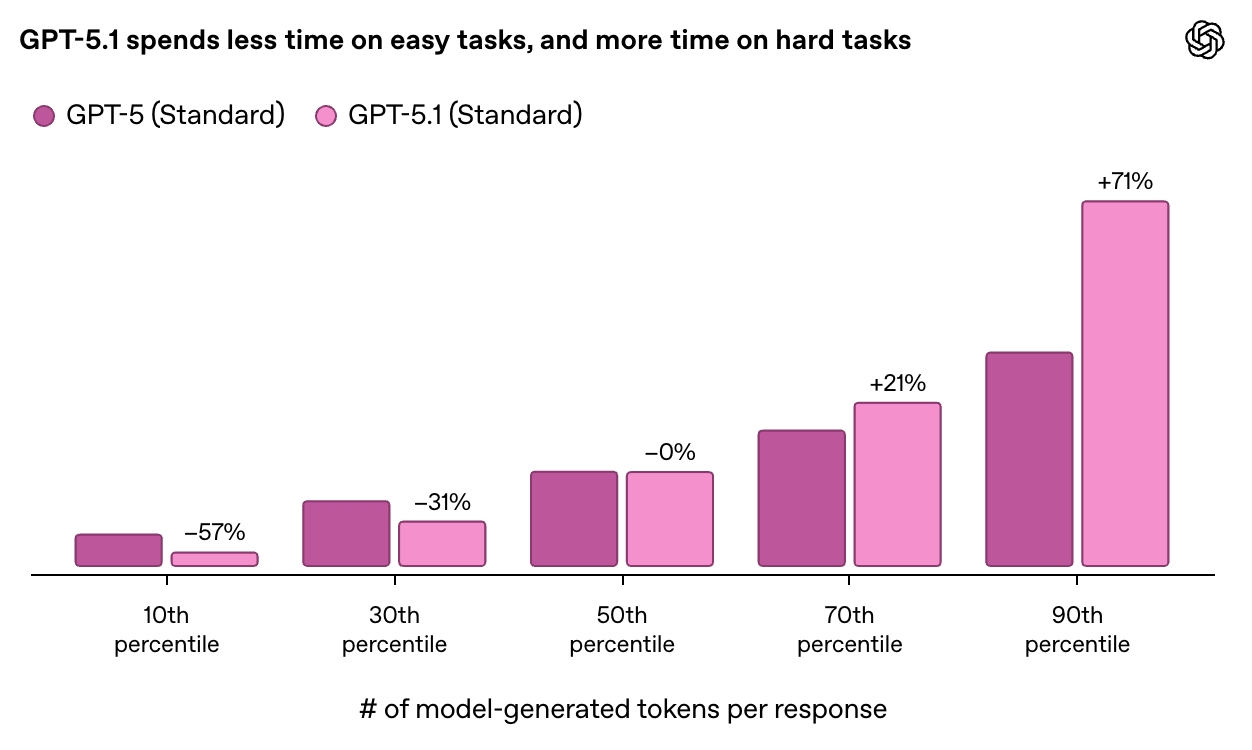
Improved instruction following
GPT-5.1 now interprets instructions more reliably, even in cases where phrasing is ambiguous. In practice, that means clearer adherence to constraints like “give me 140 characters” or “format as a table,” with fewer off-by-one errors or ignored qualifiers.
This improvement is a direct result of the adaptive reasoning system described above. Because the model can now judge when to spend more time processing a prompt before responding, it catches nuances and constraints that previous versions might have glossed over. The result is sharper alignment between what users ask and what the model delivers.
Personalized tone and style controls
Before we get into the customization options, it's worth noting that GPT-5.1 is warmer and more conversational by default, independent of any settings you adjust. OpenAI says this reflects user feedback that AI should be "enjoyable to talk to," not just capable.
So both Instant and Thinking have been tuned to feel more natural and less robotic in their base responses. I think users will find this a welcome change, as the tone of GPT-5 was a bugbear for many.
As for customization, one of the headline claims is that OpenAI now offers “more intuitive tone and style controls.” That sounds new, but it’s really an evolution of features that have been around since GPT-5.
In GPT-5, personalization lived under the familiar Custom Instructions panel. You could give the model personality cues (“Be witty,” “Sound like Gen Z”) or pick from chip-style presets like Chatty or Straight Shooting. It worked OK, but changes only applied to new chats, and the model sometimes ignored tone shifts mid-conversation.
GPT-5.1 reorganizes this into a proper Personalization hub. The presets have been renamed (these eight new names are better) — Default, Professional, Friendly, Candid, Quirky, Efficient, Nerdy, and Cynical — and they now apply instantly across all active chats.
More interestingly, OpenAI has added experimental sliders that let you fine-tune warmth and concision (and also, even, emoji frequency). The model can also detect when you’re asking for a change in tone (“Can you be more direct?”) and proactively offer to adjust its tone.
So while the company frames this as a “new era of personalization,” the substance is subtler: GPT-5.1 doesn’t invent the idea of personality; it just makes it more responsive and better integrated.

GPT-5 Personalization options. Image by Author
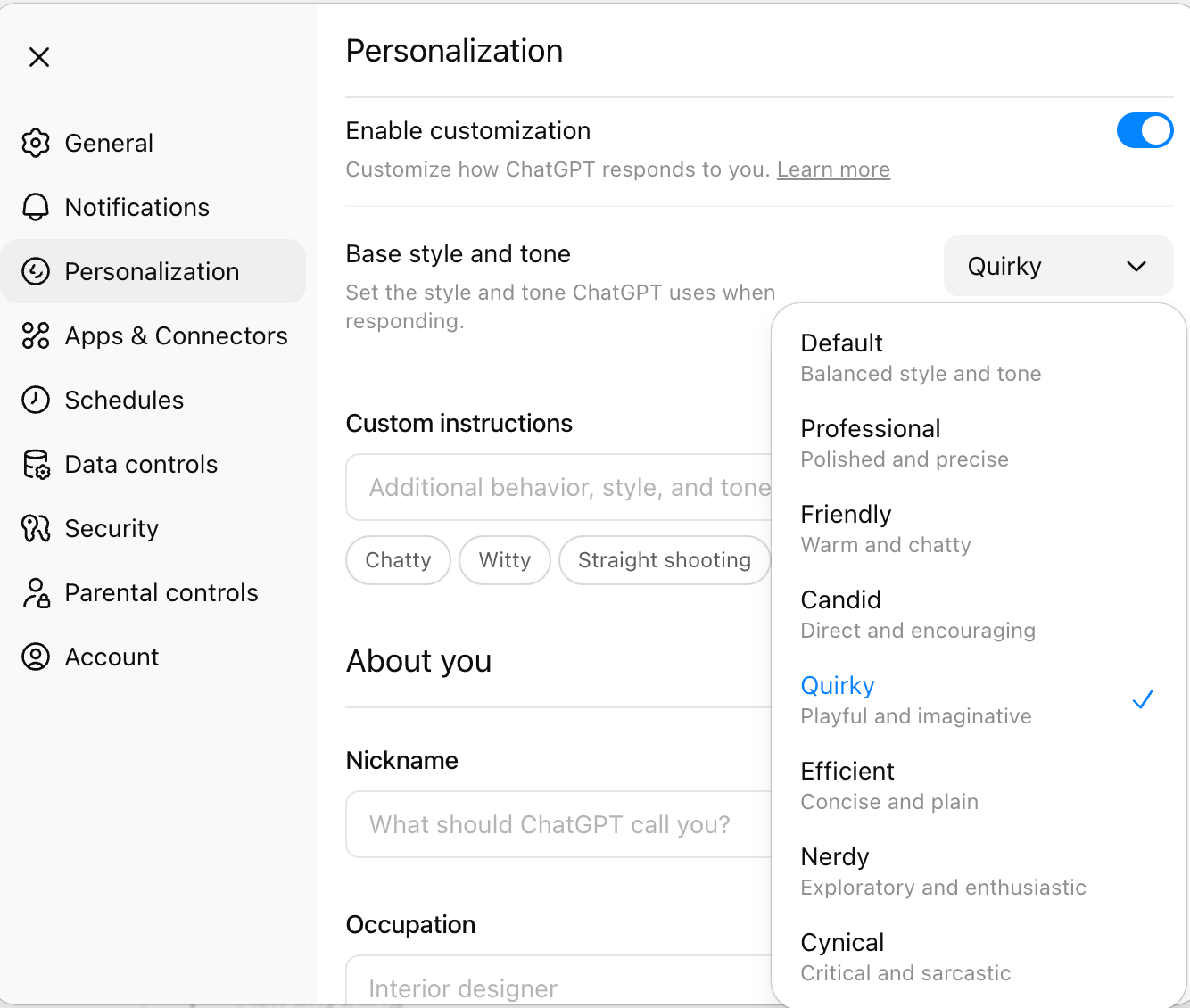
GPT-5.1 Personalization hub
Performance improvements in coding and math
While OpenAI didn't lead with benchmark tables in the announcement, they did mention a specific improvement with GPT-5.1 Instant. Because it now has adaptive reasoning, it showed significant gains on technical evaluations like AIME 2025 and Codeforces.
We don't have access to the specific numbers or comparisons to GPT-5's performance, so it's difficult to assess how meaningful these improvements are in practice. But the fact that Instant can now "think" on demand is a notable architectural change.
GPT-5.1 Hands-On Examples
To see how these improvements work in practice, I tested GPT-5.1 across several key areas OpenAI highlighted in the release.
Testing adaptive reasoning
I started by testing whether GPT-5.1 actually adjusts its thinking time based on task complexity. We gave it both a simple math problem and a multi-step probability question. The simple question returned nearly instantly, while the complex reasoning task showed a visible "thinking" indicator and took longer.
What's 15% of 240?
Simple and straightforward. Here’s the prompt I used to get a more detailed thinking response:
I have a bag with 5 red marbles and 3 blue marbles. I draw 2 marbles without replacement. What's the probability that at least one is red? Show your work step by step.
The difference was clear. GPT-5.1 visibly spent more effort on the task that needed it.
Testing response clarity
OpenAI claims that GPT-5.1 Thinking produces responses with less jargon. To test this, we asked both GPT-5 and GPT-5.1 to explain a business concept:
Explain LTV and how it relates to churn. I'm not familiar with SaaS metrics.GPT-5's response jumped straight into formulas and used undefined abbreviations like "ARPU" (Average Revenue Per User) without explanation, assuming the reader would know what it meant. While the mathematical relationship was accurate, the presentation wasn't particularly accessible.
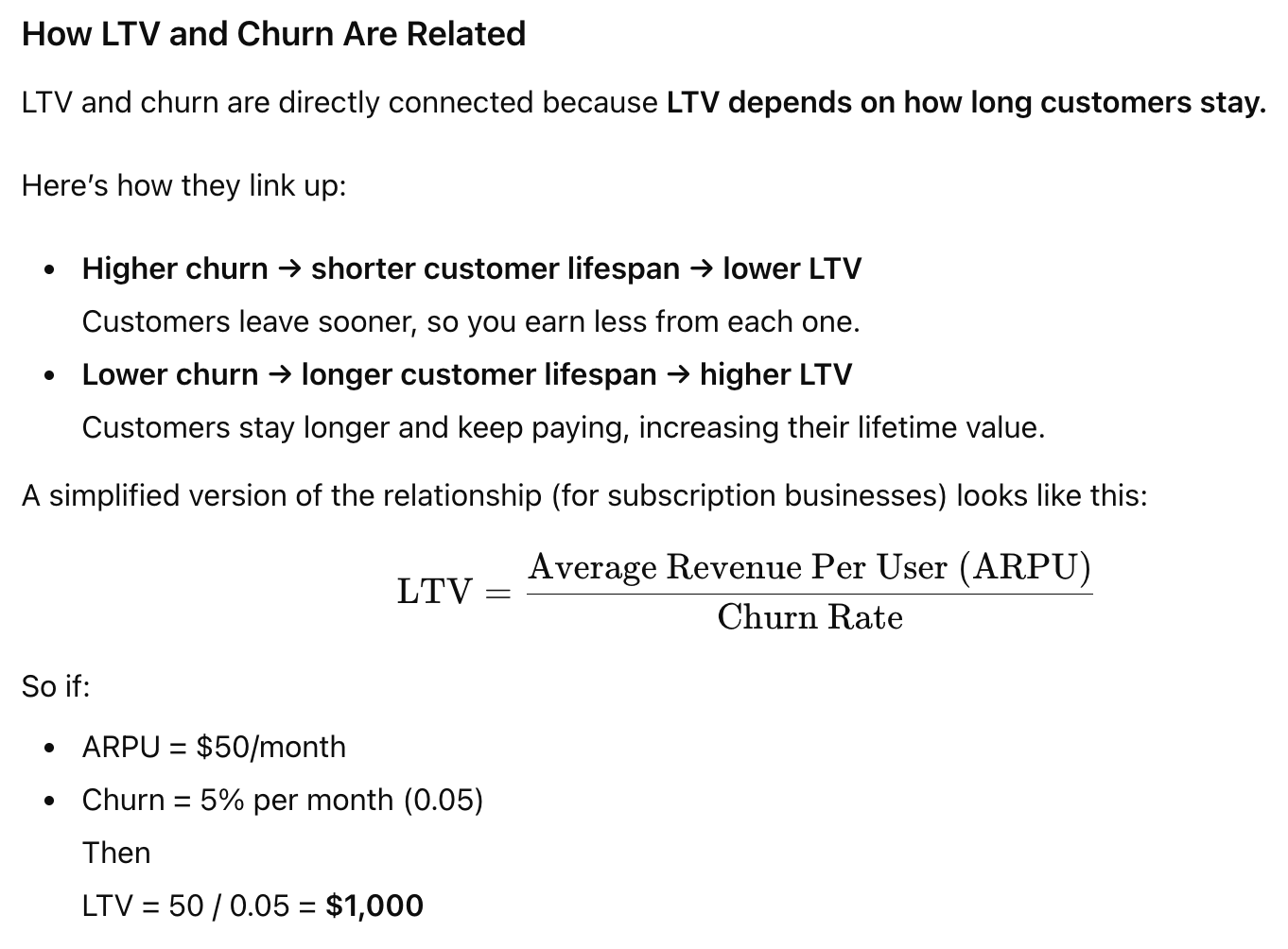
GPT-5 response. Image by Author
You can see in the response below from GPT-5.1 that things are much more aligned with the prompt I gave. It gives a clear explanation based on my context.
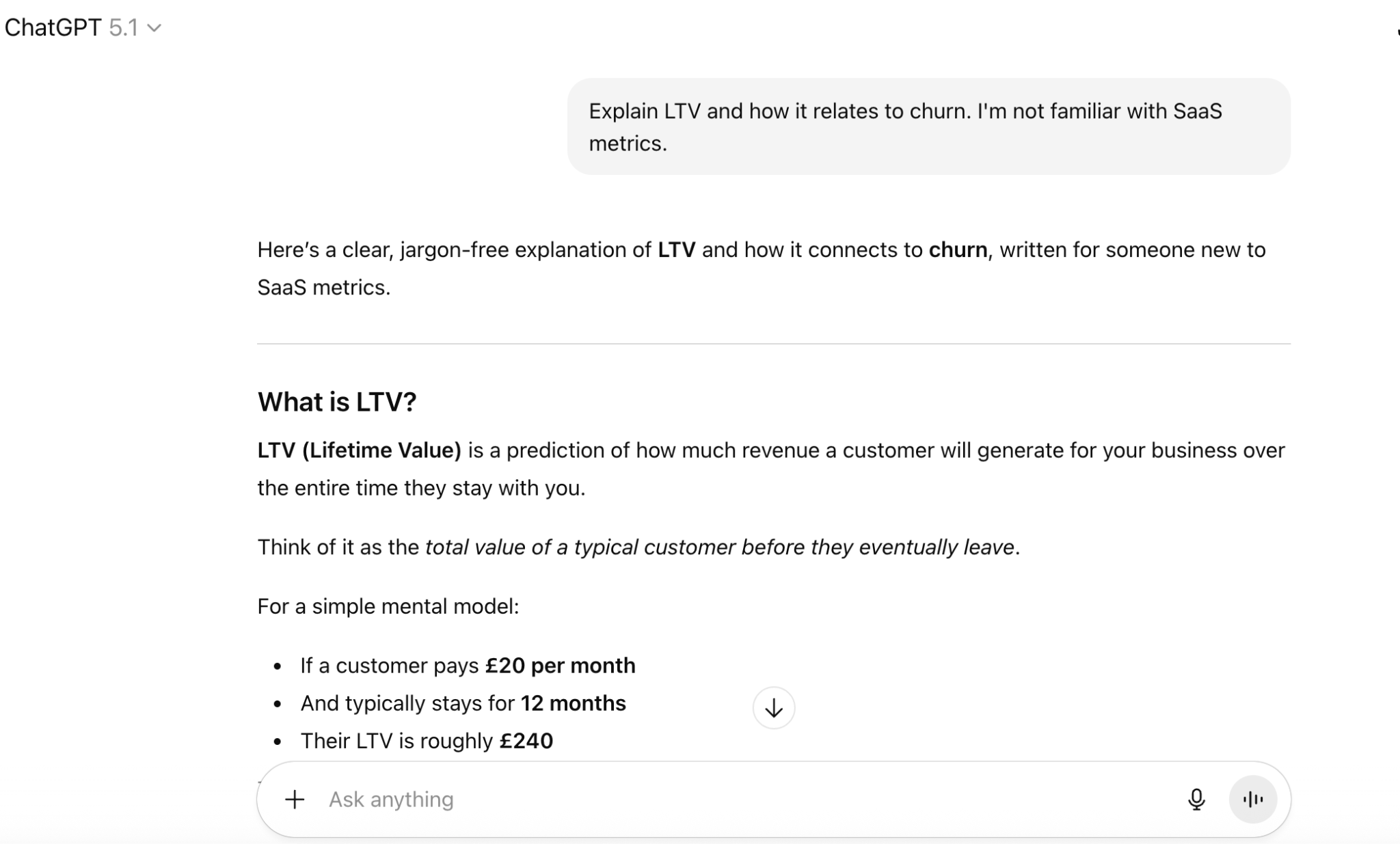
Instruction following improvements
One of OpenAI's claims is that GPT-5.1 is better at following specific constraints. We tested this with this prompt:
Write a product description for noise-canceling headphones in exactly 50 words.Here’s GPT-5’s response. I found it to be a little overly dramatic, and the world count is actually 49 rather than 50.
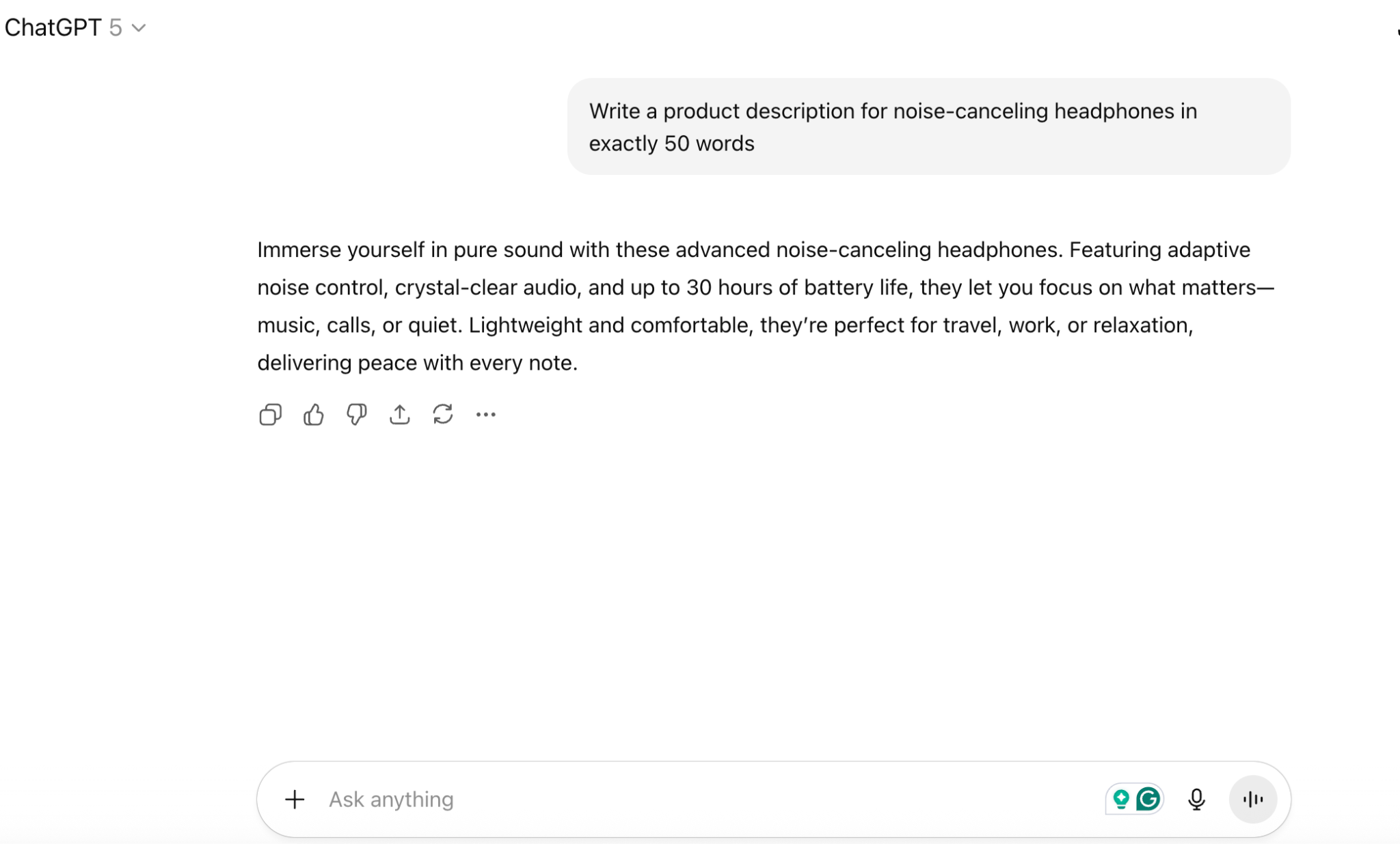
GPT-5.1 handled the task more reliably, although the improvement is subtle. The tone feels more like a product description, and it’s exactly 50 words. I think this should be especially useful on tasks with multiple overlapping constraints.
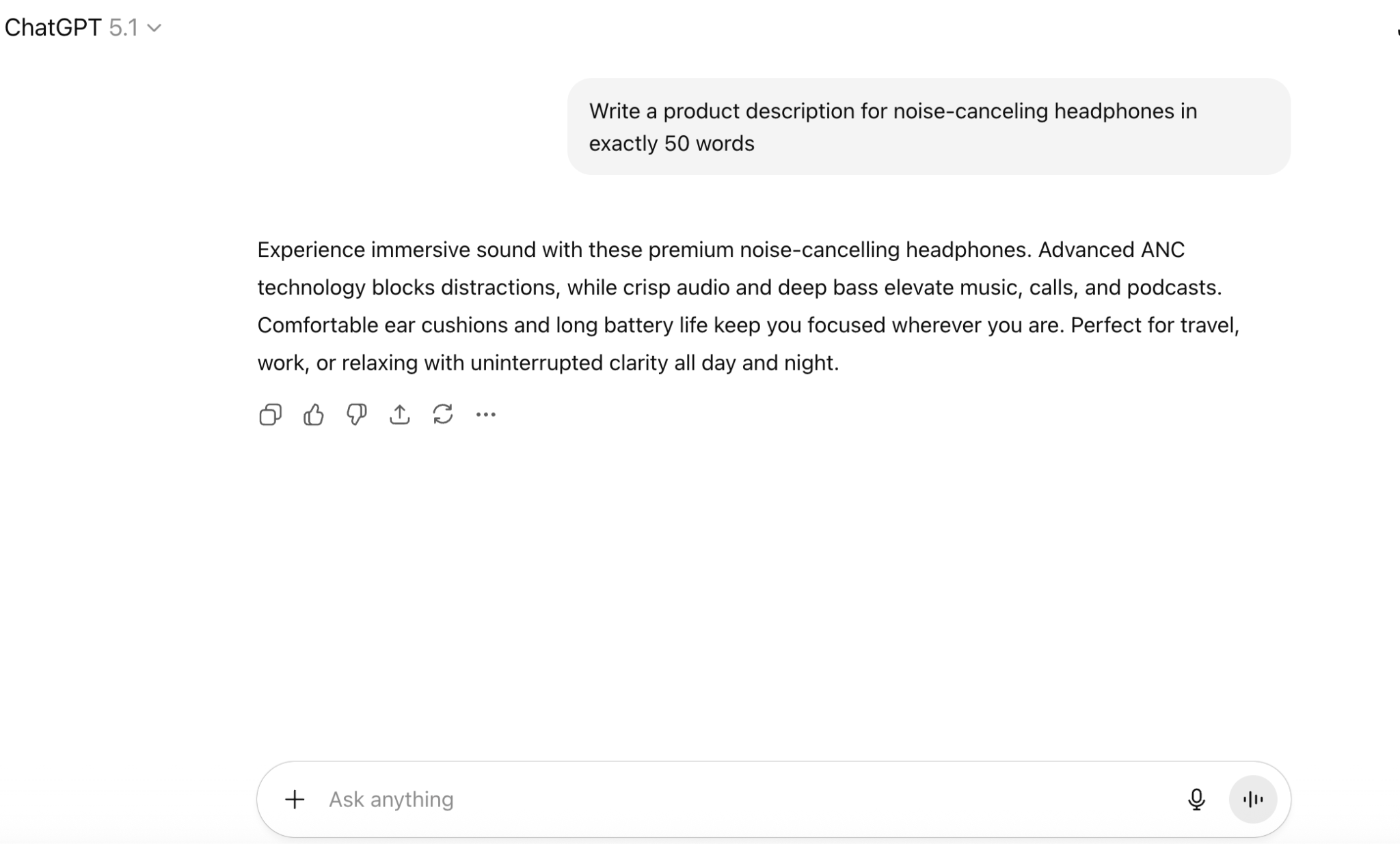
Tone personalization
To evaluate the new personalization controls, I ran the same question through multiple tone presets. Here's the prompt I used:
I'm interested in setting up a self-sustaining aquarium ecosystem that requires minimal intervention. What species and setup would work best?And to demonstrate the different responses, I selected three out of the eight presets: Professional, Candid, and Quirky.
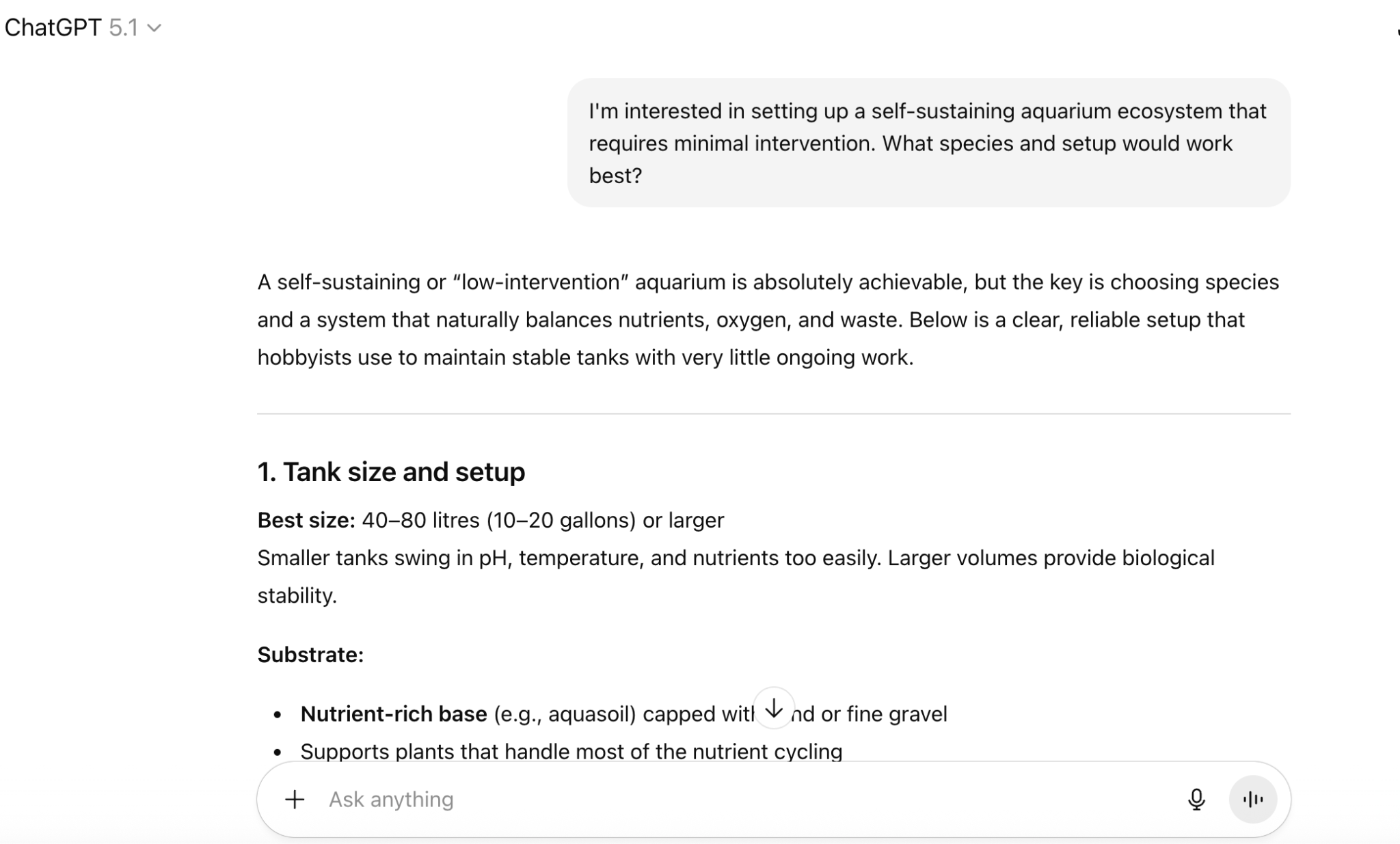
The Professional tone is to-the-point and fairly level. There’s none of the somewhat sycophantic tone that GPT-5 seemed to default to. I like that it's direct, without any fluff.
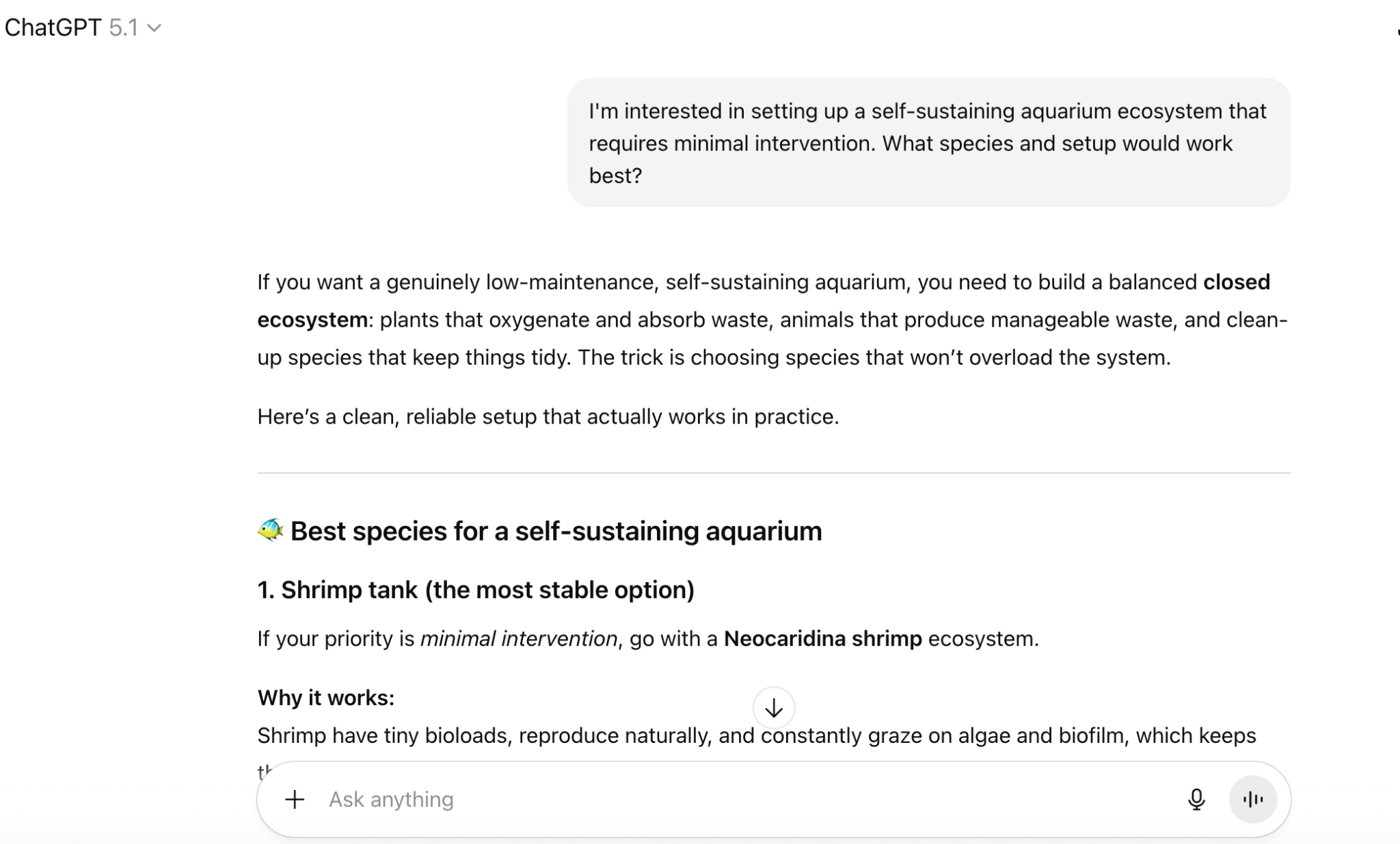
The Candid tone is, as the description says, direct and encouraging. It’s a noticeable shift from Professional, and while it's still direct, the choice of words and slightly more casual style is evident.
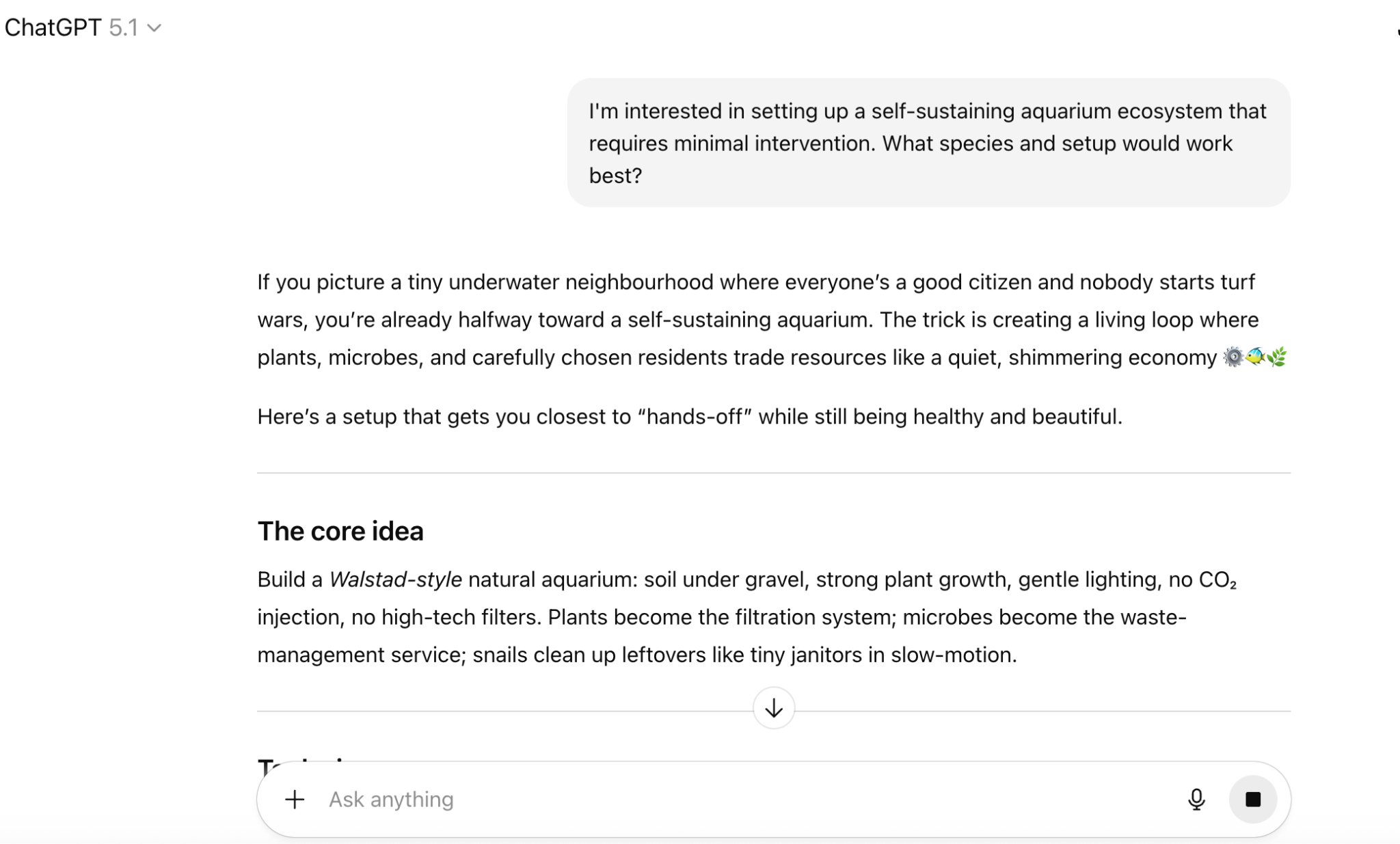
Quirky is certainly the right word here. It’s way more playful than the other two examples, with more ‘imagination’. What I found interesting, though, is that the starting point for each answer is slightly different.
When is GPT-5.1 Available?
GPT-5.1 has begun rolling out and is already available to many users, starting with paid users on ChatGPT Plus, Pro, and Business plans, as well as those on the Go tier. Enterprise and Education accounts get a seven-day early-access toggle before the update becomes the default.
If you don’t see GPT-5.1 in your model selector yet, don’t worry. Access is coming in waves over the few days after launch. OpenAI is doing it this way to keep performance stable.
Once the rollout completes, GPT-5.1 will fully replace GPT-5 as the standard model, though older versions will remain available under “legacy models” for three months so users can compare them side-by-side.
The update also extends to the API later this week. GPT-5.1 Instant will appear as gpt-5.1-chat-latest, while GPT-5.1 Thinking will be offered as gpt-5.1, both supporting adaptive reasoning out of the box.
OpenAI calls this part of a broader effort to unify naming across ChatGPT and API models, so developers and end-users can more easily match behavior between interfaces.
System Card and Safety Updates
Alongside the release, OpenAI published an addendum to its GPT-5 system card detailing the new safeguards, evaluation methods, and tuning adjustments introduced in GPT-5.1. The company says these updates focus on improving factual reliability, reducing overconfidence, and refining how the model handles ambiguous or sensitive requests.
While GPT-5.1 inherits the same alignment architecture as GPT-5, it incorporates expanded fine-tuning datasets and monitoring systems aimed at better calibrating reasoning depth to topic sensitivity. In practice, this should make GPT-5.1 less likely to generate speculative or misleading answers when reasoning through complex questions.
Final Thoughts
While GPT-5.1 looks like a smaller update than usual on paper, I think it could be a more meaningful one in practice. Rather than overhauling the flagship model, OpenAI has refined how it feels to use, giving faster responses and more control over tone and personality. It’s a quiet but tangible improvement to how ChatGPT thinks, talks, and responds.
The question is whether this UX-focused approach will continue. If GPT-5.1 is a preview of OpenAI's release strategy going forward, we should expect more iterative updates that improve the everyday experience rather than headline-grabbing capability jumps. For users, I think that might actually be better. Incremental improvements often matter more than the next big benchmark score.
If you’re keen to get to grips with all things ChatGPT, I recommend checking out the ChatGPT Fundamentals skill track, which covers everything you need to know.
GPT 5.1 FAQs
Why don’t I see GPT-5.1 in the model selector yet?
OpenAI often introduces new models in waves. Some Plus, Pro, and Team users see GPT-5.1 in their dropdowns early; others will get it over the coming days or weeks.
Why is there a gradual release?
OpenAI says this gradual release is meant to keep performance stable as usage ramps up.
Is GPT-5.1 available in the API?
Not yet, but both GPT‑5.1 Instant and GPT‑5.1 Thinking will be available to the API later this week. GPT‑5.1 Instant will be added as gpt-5.1-chat-latest. GPT‑5.1 Thinking will be released as GPT‑5.1 in the API.

I'm a data science writer and editor with contributions to research articles in scientific journals. I'm especially interested in linear algebra, statistics, R, and the like. I also play a fair amount of chess!

A senior editor in the AI and edtech space. Committed to exploring data and AI trends.
